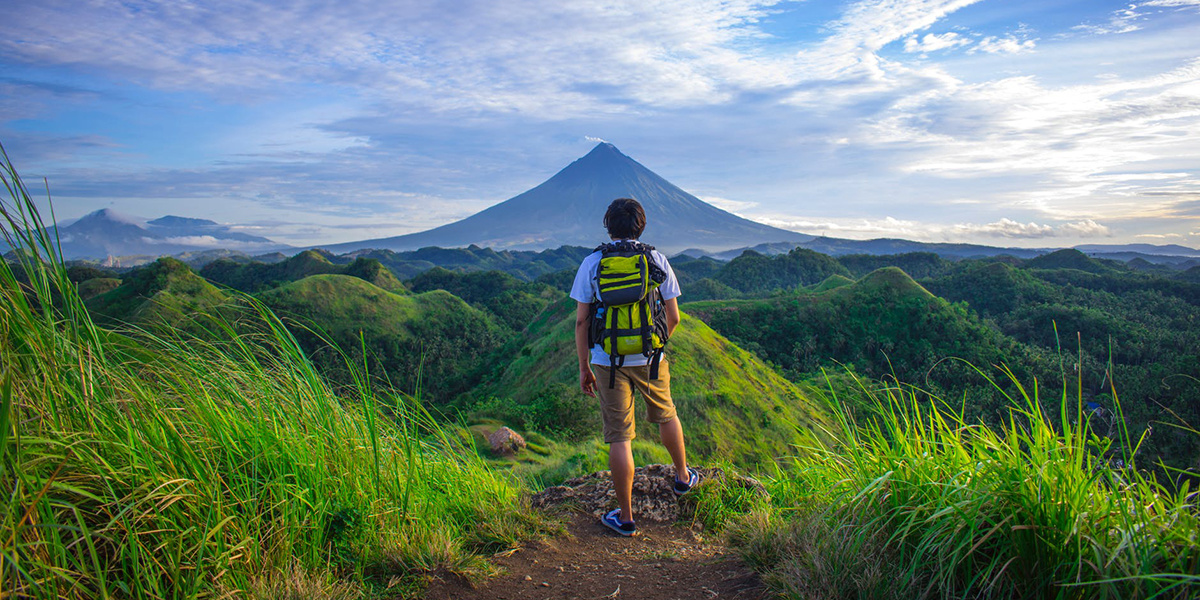

Each year, almost 1.2 billion people travel abroad, making travel and tourism one of the largest industries in the world. Representing a whopping 10 percent of the global economy, it supplies millions of jobs and benefits countless communities.
Yet while travel has many positive impacts, it can also take a heavy toll on the environment, from putting increased strain on fragile ecosystems and culturally significant sites to contributing to rising fossil fuel emissions. But that doesn’t mean you have to drop your suitcase and cancel your reservations, says WWF’s travel experts. These simple actions can help you significantly reduce the footprint of your next trip and leave a positive impact on local communities.
1. Do Your Homework
Before you book, research destinations that prioritize sustainability and that are investing in preserving their natural and cultural heritage. Some countries, such as Namibia and Bhutan, have environmental protection written into their constitution. Others demonstrate an ongoing commitment to conservation by creating and taking care of their national parks, marine reserves, and wildlife refuges. According to Jim Sano, WWF’s Vice President of Travel and Conservation, “Selecting a destination that achieves a balance of protecting natural and cultural resources, providing for sustainable livelihoods, and creating a high-quality traveler experience is challenging. Green Destinations has started to compile a list of sustainable destinations against the Global Sustainable Tourism Council’s Destination Criteria—a recognized set of criteria to assess a destination’s management policies and practices. Two-hundred destinations have been selected to date.”
2. Getting There
One of the best ways to travel more sustainably is to be thoughtful about your modes of travel. Are there environmentally-friendly ways to reach your destination? If you must fly, you can reduce your carbon footprint by selecting direct flights and by choosing a more energy-efficient aircraft, both of which lead to less jet fuel being burned. Travelers can also offset their travel emissions by purchasing reputable, accredited carbon credits from an offset platform like MyClimate.
3. Find Eco-Friendly Lodging
Seek out eco-conscious hotels and accommodations that support sustainable development and have minimal impact on the surrounding environment. Specifically, look for places to stay that use renewable energy, have effective waste management systems, recycle, or were built using renewable materials. With the Global Sustainable Tourism Council, you can easily find certified sustainable lodging to fit your requirements.
4. Choose Tours Wisely
When scheduling tours or sight-seeing trips, book through companies that adhere to environmentally-friendly policies, including protecting wildlife, supporting indigenous peoples, and employing local guides who are familiar with regional laws and customs. Thankfully, there’s an abundance of reputable companies that can help globetrotters find adventures that aren’t damaging to nature or communities.
5. Support Local Economies
Try to visit regions where local people are empowered to manage their land and natural resources—such as wildlife, parks and marine protected areas—meaning that tourism dollars directly benefit the local economy and can influence positive change.
6. Shop Carefully
Tempted by an “antique” carved ivory tusk? Or a black coral bracelet? Think twice. Just because an item is for sale doesn’t mean it’s legal to purchase. Some products, such as snake wine, tortoiseshell accessories, shells and coral jewelry, ivory, or furs are made from protected plants or endangered species and can be illegal to export or import. They can also be the products of poaching or mislabeled to entice tourists. Before you spend, be sure to ask questions. What is the item made of? Where did it come from? By making informed choices—or just saying no—you could dodge a serious fine at customs or help reduce the market demand for trafficked, at-risk species. For a list of items to avoid, check out WWF’s Buyer Beware Guide.
7. Be Smart About Plastics
Each year, more than 8 million tons of plastics wind up in our ocean, where they disrupt delicate ecosystems and endanger marine wildlife. Much of this harmful waste comes from single-use plastics like throw-away water bottles, take-out packaging, and plastic shopping bags not recovered by waste management. Minimize the amount of plastic waste you produce when you travel by carrying a re-usable water bottle, opting for locally filtered water where possible, and bringing your own tote bags for shopping.
8. Look, Don’t Touch
No matter where you go, you should never touch, feed, taunt, or play with the wild animals you encounter, which could spell trouble for both you and the animal. Also keep away from tourist attractions where you’re allowed to have hands-on experiences with animals or where wild animals are exploited. These are often harmful to the animals and fuel the illicit trade in exotic pets or endangered animal parts.
9. Pick Your Products
Some common sunscreens and soaps contain harmful chemicals that can be absorbed by the ocean’s fragile coral reefs systems and contribute to coral bleaching. Before you dive in, make sure to use reef-friendly products, such as biodegradable or mineral-based sunscreens, shampoo and soaps. Or think about switching to protective clothing, like rash guards and wet suits, which dermatologists say are just as effective as sunscreen.
10. Enjoy Sustainable Activities
As you explore new places, opt for recreational activities that don’t pollute or use energy, such as kayaking, biking or hiking. Not only will you create zero carbon emissions, you’ll likely discover unique sights and experiences away from the beaten path.

 233k
233k  41k
41k  Subscribe
Subscribe 